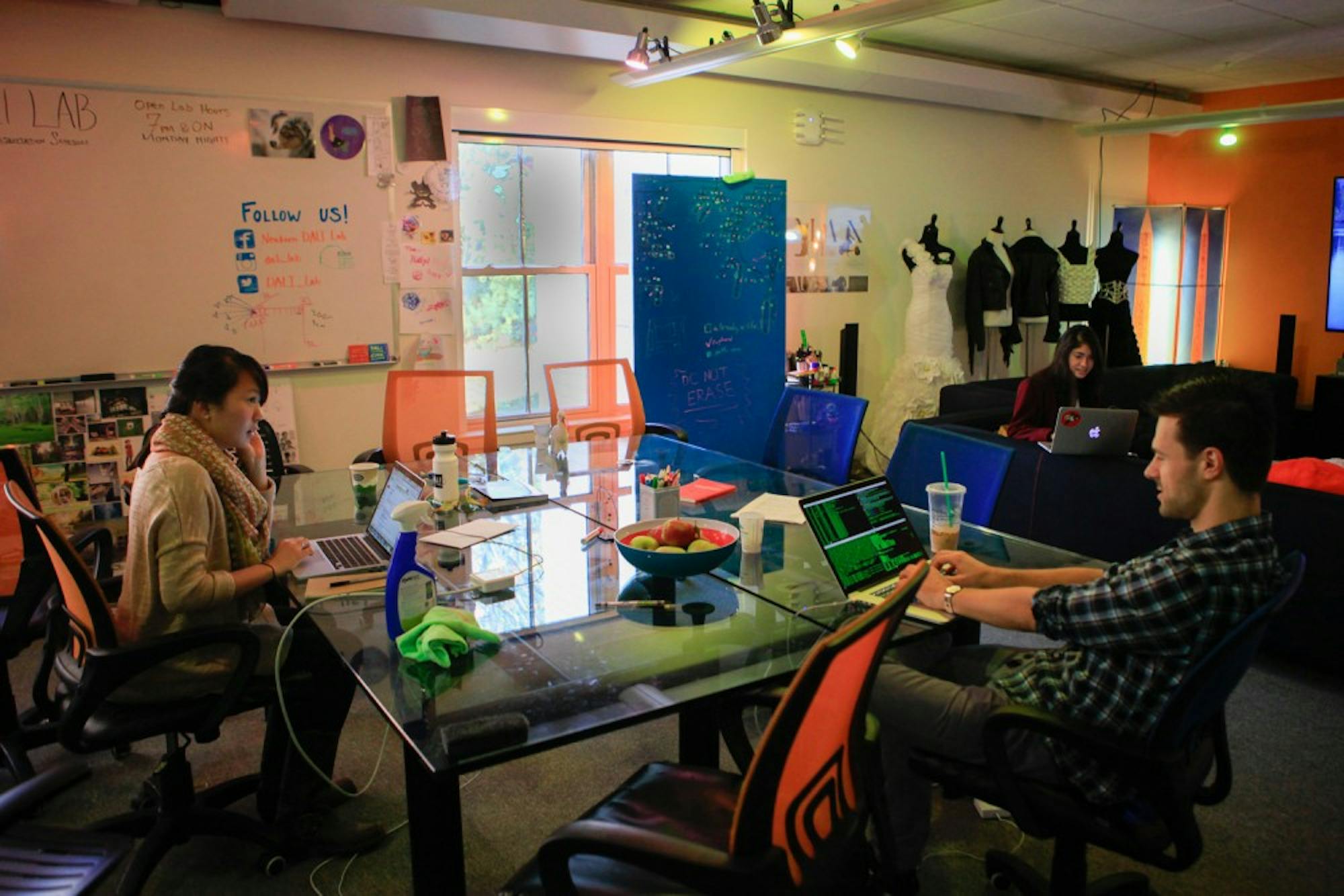The Neukom Digital Arts Leadership and Innovation Lab — stylized as the DALI lab, its logo complete with the artist’s iconic twirled moustache — has met its capacity of students and projects 18 months after it opened its doors. After a record number of students applied this term, the lab ultimately accepted about 20 percent of applicants.
Due to the influx of applications, the lab also asked some current employees to reapply for their positions, director Lori Loeb said.
The lab currently employs about 60 students each term and has completed more than 50 projects since it kicked off in April 2013, Loeb said.
Loeb said that the lab has grown so quickly because it provides useful services: creating web and mobile applications that visualize data and implementing behavior-changing technology.
“In this age when there’s so much information in the world, everyone wants to communicate this information correctly,” she said. “There’s a dearth of groups who know how to harness computers and design.”
Professors, students, startups and other groups pitch ideas for the lab, Loeb said. Potential projects must fit in with the lab’s mission, which is educational in nature, and present significant design and development challenges.
The lab has been funded by the computer science department and a grant from the Neukom Institute for Computational Science, Loeb said, but the rapid growth of its staff has made securing additional financial support a priority. Although funding through the Neukom grant was expected to last until next fall, the lab’s expansion may cause the money to run out by the end of June, she said.
Other sources of funding include a grant from NASA as well as some of the lab’s partners.
These sources will continue to fund the lab, Loeb said, but she said she hopes to find additional sources.
“We don’t want to be dependent on corporations because things change — it changes our educational piece,” Loeb said.
While finances are her immediate concern, Loeb said she hopes that eventually more than half of the student body will work for the lab during their time at Dartmouth.
The lab’s technical director Tim Tregubov attributes its high popularity to the leadership opportunities offered.
When students first come into the lab, they are often shy and unwilling to speak up in meetings, Tregubov said. Even more than developing students’ technical and design skills, the lab builds their confidence to lead projects, he said.
Lead designer Alison Leung said the lab also provides real-world experience for students within an academic support structure.
“You have a work setting, but also have a lot of support and can try new things,” Leung said. “If failure hits, there aren’t so many repercussions.”
Tregubov said he is excited that the lab is filling up but added that with more students, it becomes more of a challenge to provide personalized education for each student.
Nook Harquail ’14, a first-year graduate student at the lab, said his first project, Word Blastoff, aimed to create a new educational word game. In contrast to grid-based word games, Word Blastoff asks players to form words with letters swirling around a larger and larger black hole.
The game allows players to discover new words and then look them up in a built-in dictionary. The best moment during development was when he tested the app on children, who performed better than adults, he said.
Harquail said he is now part of a team working on a project to reduce stress and interpersonal conflicts for astronauts in space. The project is funded by a grant from NASA and was pitched by Geisel School of Medicine professor and former astronaut Jay Buckey, who is part of a research team that has developed a computer-based therapy program.
The application, which will first be tested on researchers on Antarctica, will include modules that mimic interpersonal relations and conflicts. It will eventually use virtual reality software, Harquail said.
Stephen Malina ’15 said he joined the lab last fall because he wanted applied experience in computer science. He said that the high student interest in the lab indicates that it is filling a space on campus.
“At its root, the lab satisfies the hacker or maker drive to build things,” Malina said. “There wasn’t a formal outlet for it before.”
Harquail is a former member of The Dartmouth senior staff.
This article has been revised to reflect the following correction:
Correction appended (Oct. 6, 2014):
The lab is financially supported by both the computer science department and theNeukom Institute for Computational Science, and the article has been revised to correct this error. Initially, the article reported that the Neukom Institute largely funded the lab.




